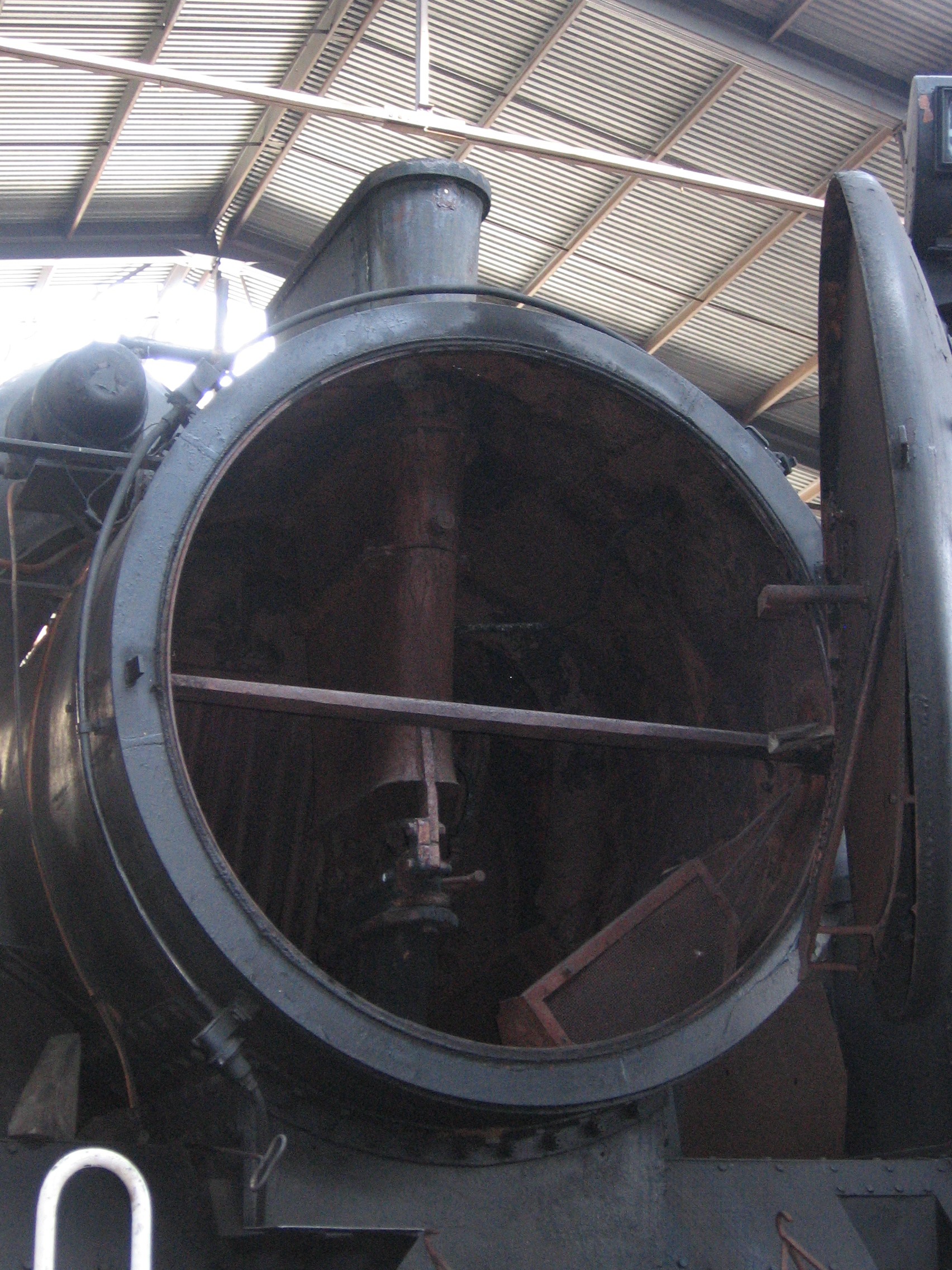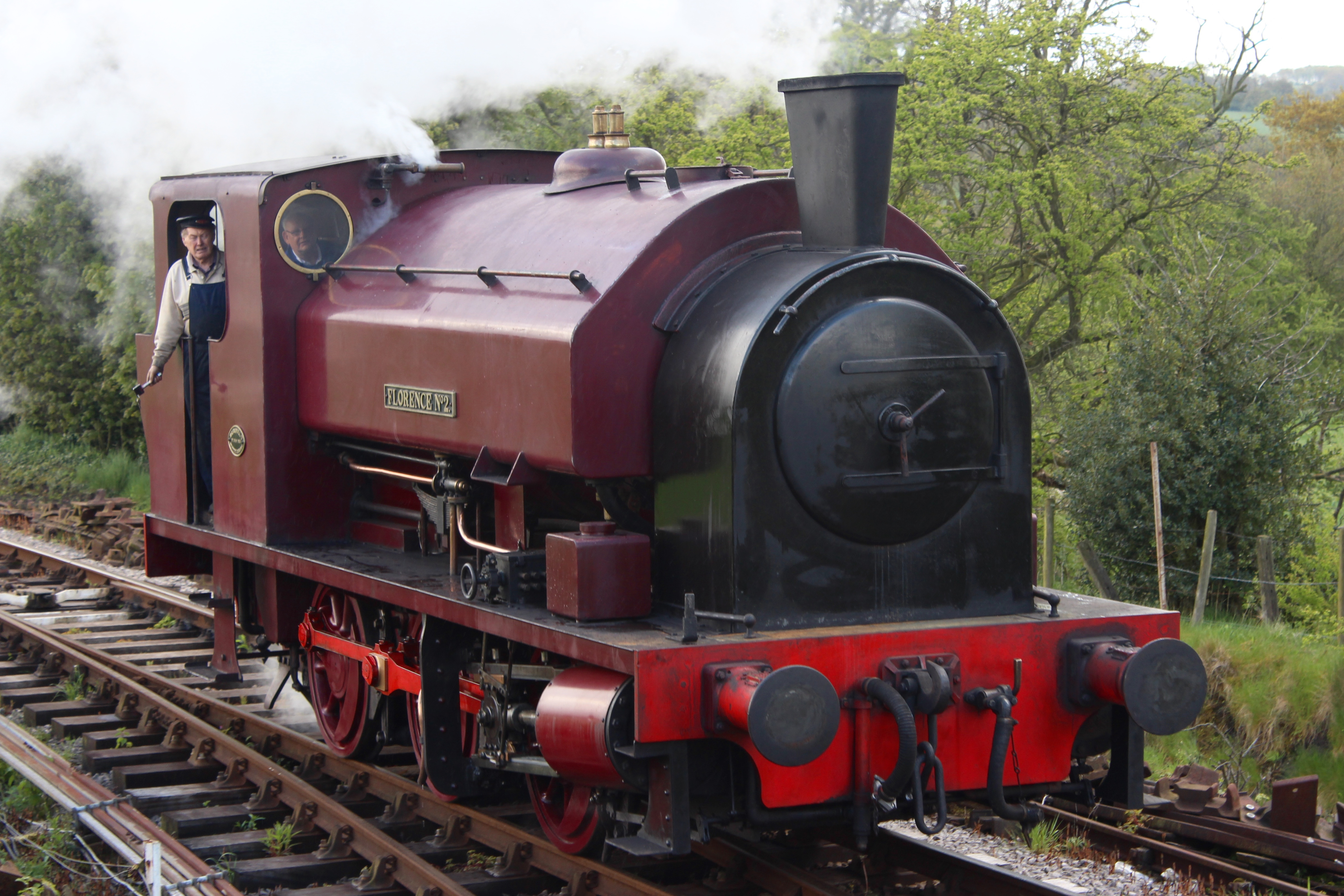Giesl ejectors on:
[Wikipedia]
[Google]
[Amazon]

 A Giesl ejector is a suction draught system for steam locomotives that works on the same principle as a feedwater injector. This ejector (German: ''Ejektor'', ''Flachschornstein'' or ''Quetschesse'') was invented in 1951 by the
A Giesl ejector is a suction draught system for steam locomotives that works on the same principle as a feedwater injector. This ejector (German: ''Ejektor'', ''Flachschornstein'' or ''Quetschesse'') was invented in 1951 by the

 The National Coal Board had a vast array of
The National Coal Board had a vast array of
Der Eisenbahnfotograf: Fotogalerie, ÖBB Dampflok
- Numerous photos of steam locomotives with Giesl ejectors {{Steam locomotive exhaust systems Steam locomotive technologies Steam locomotive exhaust systems Locomotive parts Austrian inventions

 A Giesl ejector is a suction draught system for steam locomotives that works on the same principle as a feedwater injector. This ejector (German: ''Ejektor'', ''Flachschornstein'' or ''Quetschesse'') was invented in 1951 by the
A Giesl ejector is a suction draught system for steam locomotives that works on the same principle as a feedwater injector. This ejector (German: ''Ejektor'', ''Flachschornstein'' or ''Quetschesse'') was invented in 1951 by the Austrian
Austrian may refer to:
* Austrians, someone from Austria or of Austrian descent
** Someone who is considered an Austrian citizen, see Austrian nationality law
* Austrian German dialect
* Something associated with the country Austria, for example: ...
engineer, Dr. Adolph Giesl-Gieslingen. The Giesl ejector ensures improved suction draught and a correspondingly better use of energy. The existing blastpipe in a locomotive is replaced by several, small, fan-shaped, diverging blast pipes, from which the diffuser gets its flat, long, drawn-out shape.
Fuel savings
Giesl claimed that his ejector enabled a saving in coal of between 6 and 12% – although in practice the maximum saving was closer to 8% – and an increase in power of up to 20%. Many railway administrations converted their steam engines to use Giesl ejectors, including theÖBB
The Austrian Federal Railways (german: Österreichische Bundesbahnen, formally (lit. "Austrian Federal Railways Holding Stock Company") and formerly the or ''BBÖ''), now commonly known as ÖBB, is the national railway company ...
, ČSD
Czechoslovak State Railways (''Československé státní dráhy'' in Czech or ''Československé štátne dráhy'' in Slovak, often abbreviated to ČSD) was the state-owned railway company of Czechoslovakia.
The company was founded in 1918 a ...
and Deutsche Reichsbahn (DR) in East Germany
East Germany, officially the German Democratic Republic (GDR; german: Deutsche Demokratische Republik, , DDR, ), was a country that existed from its creation on 7 October 1949 until its dissolution on 3 October 1990. In these years the state ...
, as well as railway companies in Africa
Africa is the world's second-largest and second-most populous continent, after Asia in both cases. At about 30.3 million km2 (11.7 million square miles) including adjacent islands, it covers 6% of Earth's total surface area ...
, China
China, officially the People's Republic of China (PRC), is a country in East Asia. It is the world's most populous country, with a population exceeding 1.4 billion, slightly ahead of India. China spans the equivalent of five time zones and ...
and in Japan
Japan ( ja, 日本, or , and formally , ''Nihonkoku'') is an island country in East Asia. It is situated in the northwest Pacific Ocean, and is bordered on the west by the Sea of Japan, while extending from the Sea of Okhotsk in the north ...
(such as on the Class D51
The is a type of 2-8-2 steam locomotive built by the Japanese Government Railways (JGR), the Japanese National Railways (JNR), and Kawasaki Heavy Industries Rolling Stock Company, Kisha Seizo, Hitachi, Nippon Sharyo, Mitsubishi, and Mitsubi ...
). The licence fees were not paid in every case, it being said that often they almost cancelled out the saving in coal. In the DR it was assessed that the Giesl ejectors would pay for themselves within a year, as a result of which they converted over 500 locomotives; primarily the Classes 38.10, 50, 52 and 65.10.
Use in the United Kingdom

Talyllyn Railway
In 1958, Dr Giesl-Gieslingen approachedBritish Railways
British Railways (BR), which from 1965 traded as British Rail, was a state-owned company that operated most of the overground rail transport in Great Britain from 1948 to 1997. It was formed from the nationalisation of the Big Four British rai ...
to offer a free trial of the ejector. When this offer was turned down, the inventor made the same offer to the preserved Talyllyn Railway
The Talyllyn Railway ( cy, Rheilffordd Talyllyn) is a narrow gauge preserved railway in Wales running for from Tywyn on the Mid-Wales coast to Nant Gwernol near the village of Abergynolwyn. The line was opened in 1865Drummond 2015, page 17 ...
in Wales
Wales ( cy, Cymru ) is a Countries of the United Kingdom, country that is part of the United Kingdom. It is bordered by England to the Wales–England border, east, the Irish Sea to the north and west, the Celtic Sea to the south west and the ...
, and locomotive No. 4, '' Edward Thomas'' was fitted with one. Although a coal saving of 40% was officially announced at the time, this has since been disputed by the railway's chief engineer. The ejector was removed in 1969, and no difference in coal consumption was found. The ejector is now on display in the Narrow Gauge Railway Museum at Tywyn.
British Railways
In 1962, Bulleid Battle of Britain class 4-6-2 34064 ''Fighter Command'' was fitted with a Giesl ejector on the grounds that a desired spark arrestor would "suffocate" an ordinary blastpipe. It quickly became apparent, following some adjustment, that the ejector improved the locomotive design, and it was held in high regard by the crews. A BR Standard Class 9F 2-10-0 92250 was also fitted with a Giesl ejector, but with "indifferent" results.National Coal Board
 The National Coal Board had a vast array of
The National Coal Board had a vast array of coal
Coal is a combustible black or brownish-black sedimentary rock, formed as rock strata called coal seams. Coal is mostly carbon with variable amounts of other elements, chiefly hydrogen, sulfur, oxygen, and nitrogen.
Coal is formed when dea ...
mines all around the UK and therefore employed a massive fleet of steam locomotives. With the requirement for locomotives, NCB acquired locomotives from various locomotive builders such as Hunslet
Hunslet () is an inner-city area in south Leeds, West Yorkshire, England. It is southeast of the Leeds city centre, city centre and has an industrial past.
It is situated in the Hunslet and Riverside (ward), Hunslet and Riverside ward of Lee ...
, W.G.Bagnall
W. G. Bagnall was a locomotive manufacturer from Stafford, England which was founded in 1875 and operated
until it was taken over in 1962 by English Electric.
History
The company was founded in 1875 by William Gordon Bagnall. The majority ...
, Peckett, Andrew Barclay and many more builders, which all provided locomotives of various designs to the NCB, the most notable locomotives were the Hunslet Austerity 0-6-0ST locomotives. The National Coal Board wanted to improve its steam locomotives and experimented with different blastpipe arrangements, and notably worked with Livio Dante Porta and Hunslet to create the Porta locomotives. The NCB also upgraded many of its locomotives with Giesl ejectors, with 25 of its Hunslet Austerity locomotives being upgraded to have them. NCB also upgraded a number of other locomotives such as the W.G Bagnall 0-6-0ST 3059 ''Florence No 2'' to have Giesl ejectors, Florence No 2 is preserved at the Foxfield Railway.
Keighley and Worth Valley Railway
As a consequence of the experience with ''Fighter Command'', and for the same reasons, during the 1980s the preserved Bulleid West Country class 4-6-2 34092 ''City of Wells'' was similarly fitted at theKeighley and Worth Valley Railway
The Keighley & Worth Valley Railway is a heritage railway line in the Worth Valley, West Yorkshire, England, which runs from Keighley to Oxenhope. It connects to the National Rail network at Keighley railway station.
History
Inception and ...
.
Australian Railways
New South Wales Government Railways
NSWGR only had one locomotive in its entire fleet which was fitted with a Giesl ejector. The locomotive being 3616, a member of the NSWGR C36 class 4-6-0. In 1957, 3616 was fitted with a Giesl ejector along with its new Belpaire boiler. 3616, has made it into preservation. In the ownership of the New South Wales Rail Transport Museum located at Thirlmere, the locomotive is a static exhibit in the Thirlmere Train Hall.In fiction
On the fictional narrow gauge Skarloey Railway in ''The Railway Series
''The Railway Series'' is a series of British books about a railway known as the North Western Railway, located on the fictional Island of Sodor. There are 42 books in the series, the first published in May 1945 by the Rev. Wilbert Awdry. Twen ...
'' by the Rev. W. Awdry
Wilbert Vere Awdry (15 June 1911 – 21 March 1997) was an English Anglican minister, railway enthusiast, and children's author. He was best known for creating Thomas the Tank Engine. Thomas and several other characters he created appeared ...
based on the Talyllyn Railway, the locomotive ''Peter Sam'', based on '' Edward Thomas'', also received a Giesl ejector. Unlike ''Edward Thomas'', ''Peter Sam'' retains the ejector to the present day. In ''Thomas & Friends
''Thomas & Friends'' (originally known as ''Thomas the Tank Engine & Friends'' and later ''Thomas & Friends: Big World! Big Adventures!'') is a British children's television series that aired across 24 series from 1984 to 2021. Based on ''The ...
'', the television adaptation, it was depicted as a square chimney (as on his TV series model, his old chimney was never removed and the new chimney was a shroud placed over the old one), but was changed to an accurate Giesl Ejector in the CGI series.
References
Sources
*Further reading
*External links
Der Eisenbahnfotograf: Fotogalerie, ÖBB Dampflok
- Numerous photos of steam locomotives with Giesl ejectors {{Steam locomotive exhaust systems Steam locomotive technologies Steam locomotive exhaust systems Locomotive parts Austrian inventions